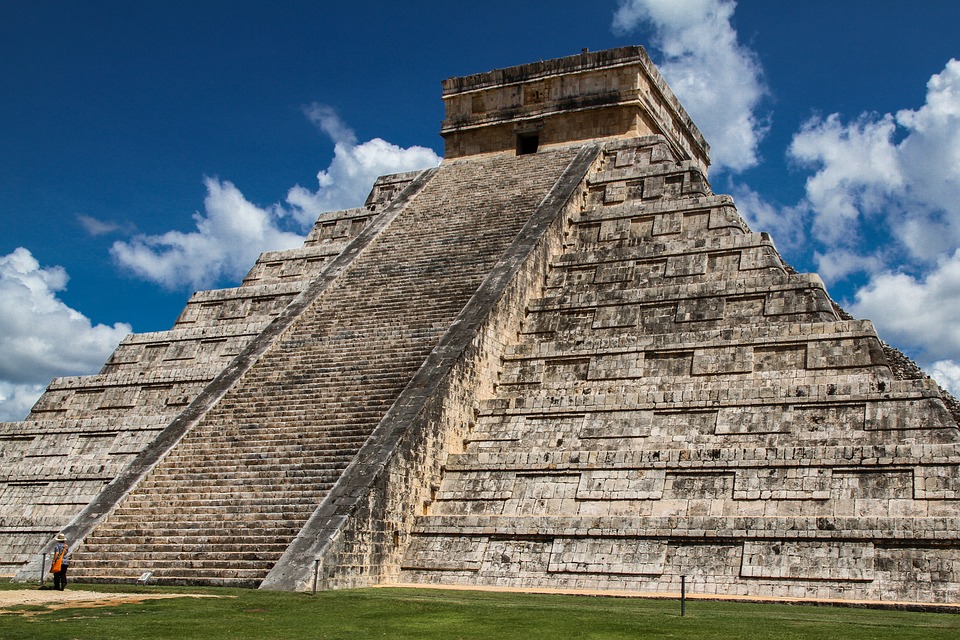Even in history, there are findings that can change how a person views the past or what could have happened in the past. The same could be said for many Mexicans, following a discovery back in 1978 that changed their nation’s history.
Express reports that in the Witness History series of BBC Mexico correspondent Maria Elena Navas, she recalled the accidental discovery a group of electricity workers made in February 1978. The workers were digging below street levels when they found a stone carving of Coyolxauhqui, the Aztec goddess of the moon. The workers reported this finding to the country’s National Institute of Anthropology and History, with Dr. Raul Arana tasked with analyzing the discovery.
Dr. Arana concluded that this was the stone of the Aztec deity. “I went to the site and saw it for the first time, I was totally amazed, all we could see was half of the sculpture, the other half was still buried, but I could see the elaborately calved leaves that were about 15cm deep and traces of red and white paint,” recalled Dr. Arana.
Navas explained how this discovery played a part in finding the Templo Mayor and that it was not as far as they thought it might be. The stone carving turned out to be one giant stone disc weighing eight tons and measured three meters in diameter and that it was believed to be buried at the foot of the Great Temple or Templo Mayor. Soon enough, the foundations of the ancient temple were discovered, marking a huge archaeological breakthrough.
Speaking of discoveries, a treasure trove from a Spanish armada fleet was found along the coast of Northern Ireland. This discovery was shown on the BBC program Britain’s Sunken History, where treasures from one of the ships, the Girona, were found by divers back in the 1960s.
The treasures that lay untouched for the past four centuries could be viewed at the Ulster Museum in Belfast. The wrecked Girona was found a few miles within Dunluce Castle, which is also home to Irish chief Sorley Boy MacDonnell. 200 bodies were found from the wreck and were given a Catholic burial.



 Ancient Mars may have had a carbon cycle − a new study suggests the red planet may have once been warmer, wetter and more favorable for life
Ancient Mars may have had a carbon cycle − a new study suggests the red planet may have once been warmer, wetter and more favorable for life  SpaceX Starship Explodes in Texas During Test, Citing Nitrogen Tank Failure
SpaceX Starship Explodes in Texas During Test, Citing Nitrogen Tank Failure  Trump Signs Executive Order to Boost AI Research in Childhood Cancer
Trump Signs Executive Order to Boost AI Research in Childhood Cancer  SpaceX’s Starship Completes 11th Test Flight, Paving Way for Moon and Mars Missions
SpaceX’s Starship Completes 11th Test Flight, Paving Way for Moon and Mars Missions  Blue Origin’s New Glenn Achieves Breakthrough Success With First NASA Mission
Blue Origin’s New Glenn Achieves Breakthrough Success With First NASA Mission  NASA Resumes Cygnus XL Cargo Docking with Space Station After Software Fix
NASA Resumes Cygnus XL Cargo Docking with Space Station After Software Fix  Is space worth the cost? Accounting experts say its value can’t be found in spreadsheets
Is space worth the cost? Accounting experts say its value can’t be found in spreadsheets  Tabletop particle accelerator could transform medicine and materials science
Tabletop particle accelerator could transform medicine and materials science  Neuren Pharmaceuticals Surges on U.S. Patent Win for Rare Disorder Drug
Neuren Pharmaceuticals Surges on U.S. Patent Win for Rare Disorder Drug  Kennedy Sets September Deadline to Uncover Autism Causes Amid Controversy
Kennedy Sets September Deadline to Uncover Autism Causes Amid Controversy  Lost in space: MethaneSat failed just as NZ was to take over mission control – here’s what we need to know now
Lost in space: MethaneSat failed just as NZ was to take over mission control – here’s what we need to know now  Trump Administration to Launch Autism Initiatives Targeting Acetaminophen Use and New Treatment Options
Trump Administration to Launch Autism Initiatives Targeting Acetaminophen Use and New Treatment Options  Neuralink Expands Brain Implant Trials with 12 Global Patients
Neuralink Expands Brain Implant Trials with 12 Global Patients 































